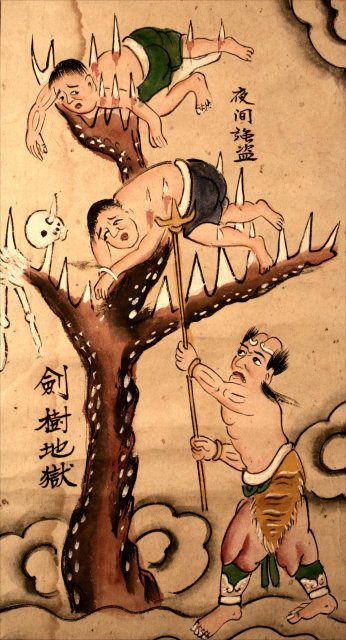
Translation
Hell of the sword tree
Man in sword tree: Violent robber in the night
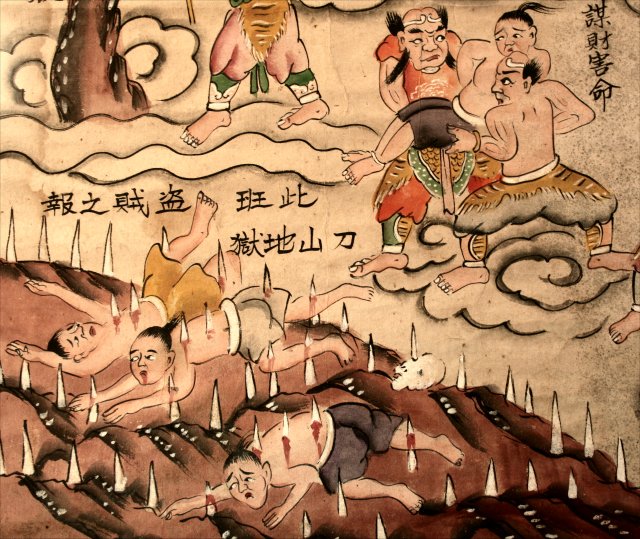
Translation
Hell of knife hill
Man being thrown onto knife hill: Plotted to murder for goods
Man impaled on knife hill: This group is receiving recompense for robbery and theft
The "Transformation text on Mahamaudgalyayana rescuing his mother from the underworld" (a.k.a. "Mulian saves his mother") provides a frightening description of the sword trees and knife hill as here translated by Victor Mair:
Maudgalyayana went forward and again he came to another hell. The left side of it was named Knife Hill and the right was named Sword Forest. Inside the hell, spear tips and swords were pointed from opposite sides and blood flowed copiously. He saw the warden driving countless sinners into this hell.
"What is the name of this hell?" Maudgalyayana asked.
"This is the Knife Hill and Sword Forest Hell," answered an ogre.
"What sinful karma did the sinners who are in this hell produce that they should have fallen into this hell?" Maudgalyayana asked.
"While there were alive," the warden informed him, "the sinners who are in this hell trespassed upon and damaged the perpetual property of the assembly of monks. They befouled the monastery gardens, were given to eating the fruit of the orchards held in perpetuity by the monasteries, and stole firewood from the forests held in perpetuity by the monasteries."
Here is the place where they are now being made to climb up the trees of swords with their hands, causing them to be stripped bare of every limb and joint.The white bones on Knife Hill were strewn chaotically every which way,
The human heads in Sword Forest numbered in the thousands and ten thousands;
Those who wish to avoid clambering up the hill of knives,
Should never pass by the monastery holdings without adding good earth.
Propagate fruit trees and present them to the monastery orchards,
Contribute seeds to increase the crops from the fields held in perpetuity.
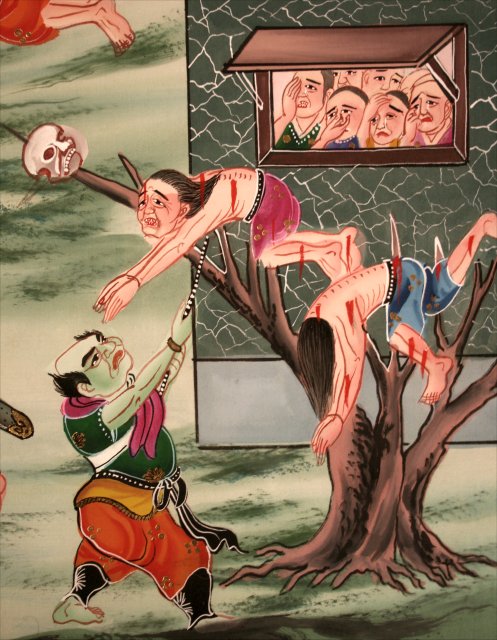
A second example of the sword tree from another hell scroll (E6).
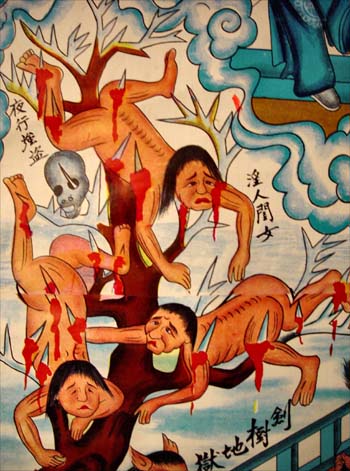
A third example of the sword tree from another hell scroll (B4).

A second example of the knife hill from another hell scroll (G2).
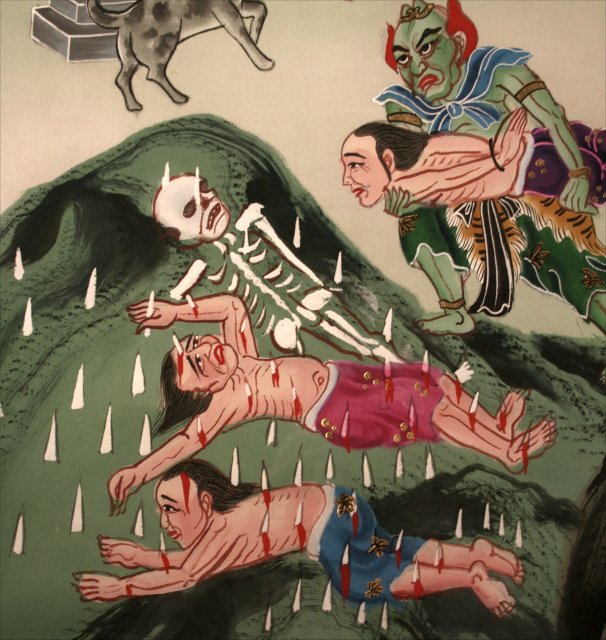
A third example of the knife hill from another hell scroll (E4).
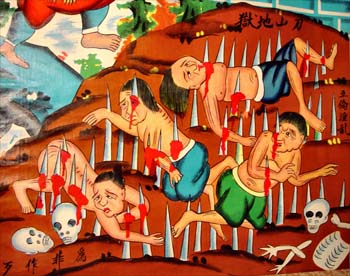
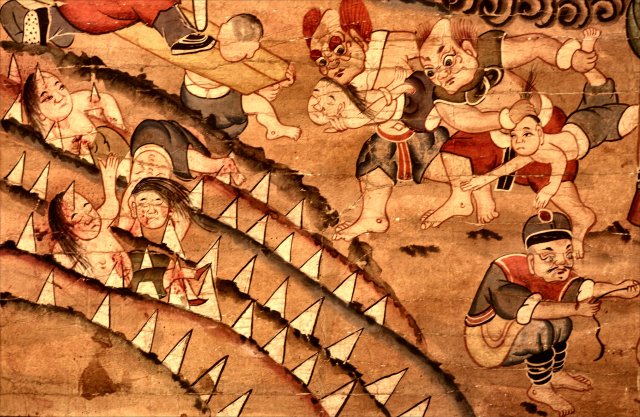
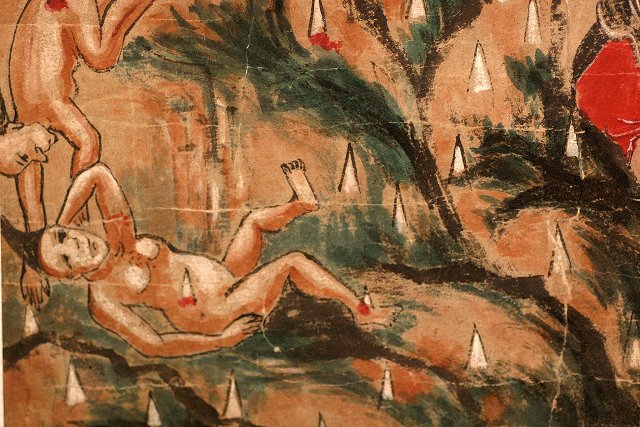
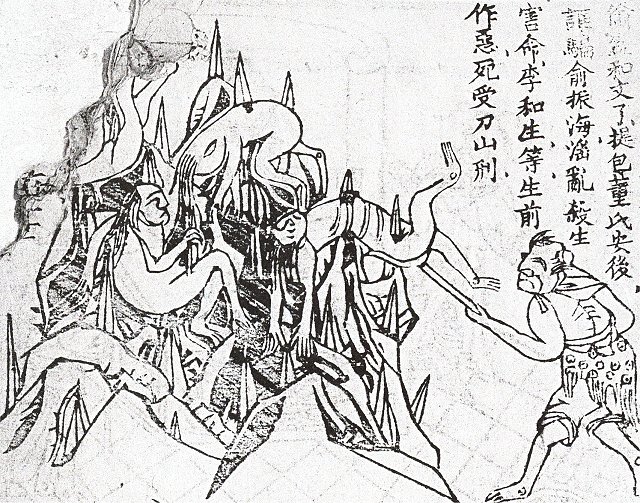
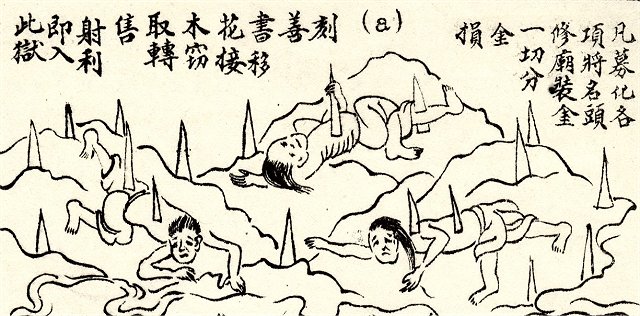
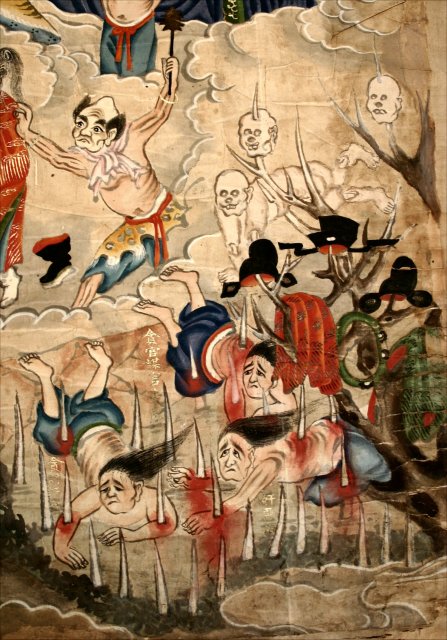

The knife hill as depicted at Fengdu, the City of Ghosts.